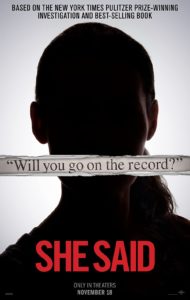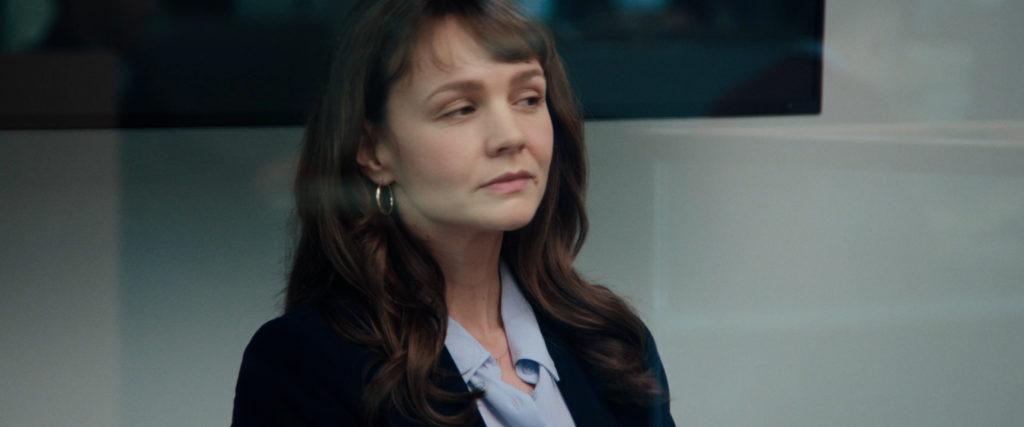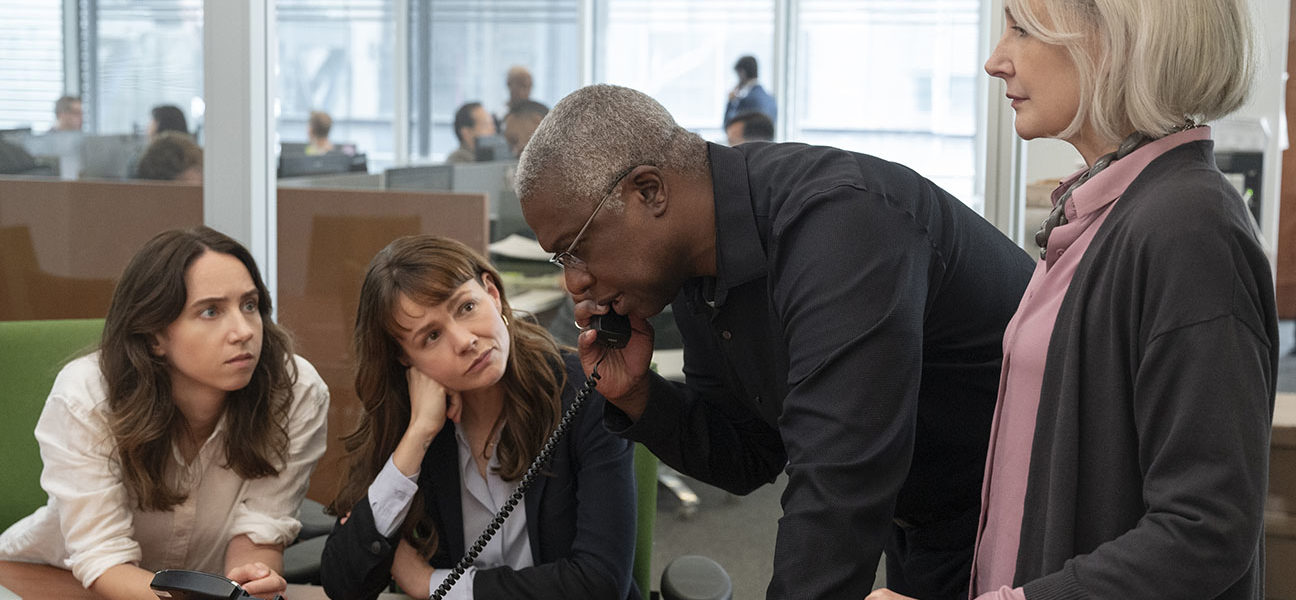On the Record: Carey Mulligan and Zoe Kazan Star in the True Story of the Undoing of Harvey Weinstein
DIRECTED BY MARIA SCHRADER/2022

One of things that the 1970s firebrand film All the President’s Men taught us is that when it comes to depicting journalism in action, “tell, don’t show” can actually work. For the movies, particularly scripted narratives, it’s the opposite approach of the method that’s forcibly pounded into any the head of any aspiring screenwriter. Yet, with director Maria Schrader’s She Said, being made to watch anxious reporters chase down apprehensive but also cagey subjects to tell The Big Story is rarely not gripping. Instead of cutting to a flashback, we simply watch characters open up about their experiences. And thank goodness She Said operates that way, as it is a step-by-step chronicle of the downfall of real-life film mogul and repeated sexual abuser/assaulter, Harvey Weinstein. No one should want to see the things he’s done.
Though the specter of Weinstein looms large over the entirety of She Said, he’s barely shown; his face never seen. It’s a smart choice, maybe even a conventionally defiant one, making it crystal clear that this is in no way his story. Schrader’s film is all about showcasing the two New York Times reporters, Megan Twohey (Carey Mulligan) and Jodi Kantor (Zoe Kazan), and their restless pursuit of the truth. She Said, in fact, hyperfocuses on Twohey and Kantor, depicting them as being on call 24/7 in near-constant pursuit of firsthand testimonials from people on all sides. Again and again, we see how husbands, children, and any semblance of real life are shoved to the wayside. While Mulligan’s and Kazan’s suitable performances are too steadfast to likely win any acting awards (leave such honors for the actors playing their vulnerable interview subjects; Ashley Judd, bravely playing herself, is worthy of an altogether different form of acclaim), they manage to cultivate relatable emotion within their characters- something not common in this type of procedural that’s so often cold to the touch.

When She Said stumbles (and it does a little), it’s when it goes against its own better judgement and cuts to flashbacks. Such moments are rare, but they can’t help but play as a formal compromise. Women crying and women running is and has always been more “movie friendly” than women talking. Audiences have long been conditioned to sympathize with the victim when the victim is seen. Schrader resists the temptation to indulge such conditioning for the most part, but caves in here and there, primarily at the beginning and the end. With all the emotional testimony in play throughout She Said that’s circa 2016, do we really need to see these people, portrayed by different actors as Weinstein’s fresh-faced assistants, in the immediate aftermath of their horror? I suspect that Schrader knows the answer.
She Said is resoundingly sturdy in its all-business account of what it took to bring down Harvey Weinstein. The absolute value and necessity of a free press isn’t quite the momentary talking point that it was during the Trump presidency when Steven Spielberg was moved to make The Post. Similarities have already been drawn to Tom McCarthy’s Best Picture winner, Spotlight, though She Said offers more in terms of cinematic scope. By being the first narrative motion picture to ever be allowed to film inside the spacious New York Times building imbues instant production value to the otherwise modestly scaled film.
She Said being adapted into a major feature film brings full circle some of the deep-seated internal questions that Twohey and Kantor’s source materials (the news articles, and then a same-titled book) raise. Namely, why have powerful men been able to get away with so much for so long? Like anyone in a position of power, there are far, far more people beneath his level of standing. As history occasionally demonstrates (though not often enough), there can be a lot more power in those numbers. In the case of Weinstein, in which everyone was initially tremendously fearful of coming forward, eighty-two more did following the first wave. All it takes are a few strategic cracks for any given dam to break.

And another thing… How do we as a culture, as a world, really, really, really consider actresses (or, actors) in terms of sexual perception/availability? Casual movie buffs are led to rank onscreen talent in terms of hotness with “free pass” lists and whatnot. How thin the line between such “playful” fantasy and real-life abuse seems to become for a lot of men in the film industry once they attain status. The bigger version of this question, driven by accusations against candidate-turned-President Trump (briefly covered in the film), is what lit the fire for Twohey and Kantor in the first place. Their Times bosses (two of whom are portrayed memorably by Patricia Clarkson and Andre Braugher) encourage them in their pursuit, all the way to the top. There had been other attempts at bringing Harvey Weinstein low before, but the time and energy was finally right in 2016. Thanks to their reporting, he’s has been removed from the Hollywood equation. But more importantly than that, sexual abuse/assault victims everywhere can breathe that much more freely.
There’s no Hollywood in Schrader’s film. The fact that Weinstein is a movie mogul is only important insofar as the clout he amassed and took gross advantage of. This is the story of how good old-fashioned boots-on-the-ground journalism can make a difference, no matter how hard tyranny pushes back. Maybe ironically then, we never see an actual newspaper in the film. Nor do we hear any hashtag terms of the moment like “MeToo” or “Time’sUp”. Schrader and company aren’t interested in that. Though vast and sprawling in terms of voices in the mix, She Said is also as laser focused as it can be. Weinstein of course attempts mightily to have the whole thing killed. But instead, we have She Said. And he knows what it’s like to be dead.


